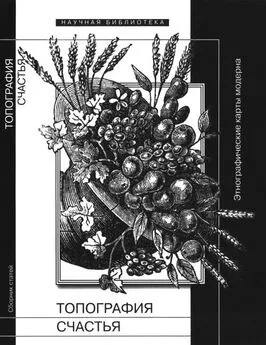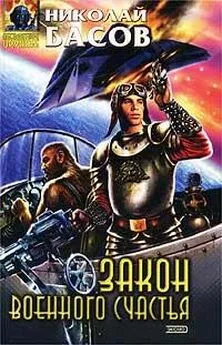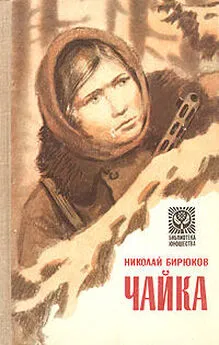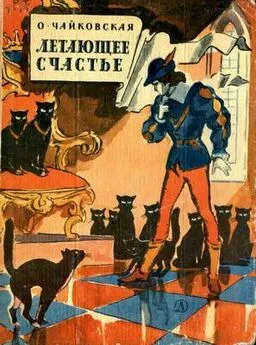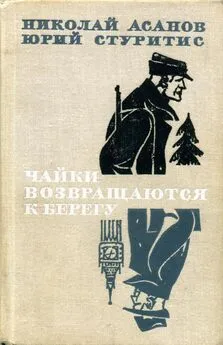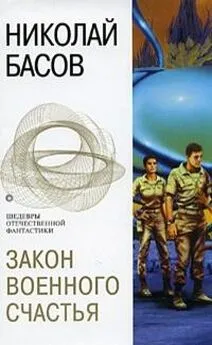Николай Ссорин-Чайков - Топография счастья
- Название:Топография счастья
- Автор:
- Жанр:
- Издательство:Новое литературное обозрение
- Год:2013
- Город:Москва
- ISBN:978-5-4448-0122-2
- Рейтинг:
- Избранное:Добавить в избранное
-
Отзывы:
-
Ваша оценка:
Николай Ссорин-Чайков - Топография счастья краткое содержание
В центре внимания данного сборника — категория счастья в современной культуре, которая рассматривается в различных контекстах: от «американской мечты», представленной в образе отдельного дома и машины до мест свадебной фотосъемки в российских городах. Где и как люди ищут счастье, как это происходило в разные эпохи и в разных странах (Великобритания, Индия, Индонезия, Россия, США)? Целью сборника является своего рода эксперимент — набросать в первом приближении этнографическую карту модерна как отражение погони за счастьем, как карту социального пространства, отмеченного его образами.
Топография счастья - читать онлайн бесплатно полную версию (весь текст целиком)
Интервал:
Закладка:
Поскольку фильмы на хинди в первую очередь ориентированы на индийского гражданина, их можно рассматривать как инструмент формирования и закрепления национального единства (Rajadhyaksha 2000). Роль эмоций в этом процессе требует дальнейших исследований. Эмоции персонажей подчас становятся своего рода мифологемами индийской массовой культуры (как в самой Индии, так и за ее пределами), подкрепляемыми эмоциональным ответом зрительской аудитории. Все это свидетельствует в пользу справедливости распространенной точки зрения о том, что публичная демонстрация и совместное переживание эмоций (особенно эмоций бурных, избыточных) являются неотъемлемыми и коренными составляющими «индийскости».
Adiga А. (2008). The white tiger. New York: Free Press.
Altieri Ch. (2003). The particulars of rapture: an aesthetics of the affects. Ithaca: Cornell University Press.
Ang I. (1985). Watching Dallas: soap opera and the melodramatic imagination. London: Routledge.
Argyle M. (2001). The psychology of happiness. 2 nded. Orig. 1987. London: Routledge.
Arora P. (1997). Devdas: India’s emasculated hero, sado-masochism and colonialism // http://social.chass.ncsu.edu/jouvert/vlil/devdas.htm. Viewed 28 May 2004.
Averill J. R. (1980). A constructivist view of emotion // Emotion: Theory, research and experience: Vol. I. Theories of emotion / R. Plutchik and H. Kellerman (eds.). New York: Academic Press. P. 305–339. Reprinted in: Social psychology readings: A century of research / A. G. Halberstadt and S. L. Ellyson (eds.).New York: McGraw-Hill, 1990. P. 143–156.
Banaji S. (2006). Reading «Bollywood»: the young audience and Hindi films. Basingstoke: Palgrave Macmillan.
Ben-Sh. T. (2007). Happier. New York: McGraw Hill.
Beth S. (2007). Hindi Dalit autobiography: an exploration of identity // Modem Asian Studies. № 41 (3). P. 545–574.
Blackburn S. (2001). Being good: a short introduction to ethics. New York: Oxford University Press.
Brooks P. (1976, 1995). The melodramatic imagination: Balzac, Henry James, melodrama and the mode of excess. New Haven: Yale.
Caroll N. (1997). Art, narrative and emotion // Emotion and the arts / M. Hjort and S. Laver (eds.). Oxford: Clarendon Press. P. 190–211.
Cornelius R. R. (1995). The science of emotion: research and tradition in the psychology of emotion. London: Prentice-Hall.
Corrigan J. (2004). Religion and emotion: approaches and interpretations. New York: Oxford University Press.
Das G. (2009). The difficulty of being good: on the subtle art of dharma New Delhi: Penguin.
Derné S. (2000). Movies, masculinity, modernity: an ethnography of men’s filmgoing in India. Westport Conn.: Greenwood Press.
Divine passions: the social construction of emotion in India / L. Owen (ed.). Delhi: Oxford University Press, 1990.
Doniger W. (2004). The mythology of self-imitation in passing: race, gender and politics. The Henry Myers Annual Lecture, delivered at SOAS, 20 September.
Dwyer R. (2000a). All you want is money, all you need is love: sex and romance in modem India London: Cassell.
Dwyer R. (2000b). Shooting stars: the Indian film magazine Stardust // Pleasure and the nation: the history, consumption and politics of public culture in India / R. Dwyer and Ch. Pinney (eds.). Delhi: Oxford University Press. P. 247–285.
Dwyer R. (2002). Yash Chopra // World directors’ series. London: British Film Institute / Berkeley: University of California Press / New Delhi: Roli Books.
Dwyer R. (2004). Yeh shaadi nahin ho sakti! (This wedding cannot happen!) // (Un)tying the knot: ideal and reality in Asian marriage. (Asian Trends, 2) / G. W. Jones and K. Ramdas (eds.). Singapore: Asia Research Institute, National University of Singapore. P. 59–90.
Dwyer R. (2005). 100 Bollywood films. London: British Film Institute.
Dwyer R. (2006). Filming the gods: religion and Indian cinema London, New York and Delhi: Routledge.
Dwyer R. (2009). Ich mag es, wenn du zomig wirst: Amitabh Bachchan, Emotionen und Stars im Hindi-film. (I love you when you’re angry: Amitabh Bachchan, the star and emotion in the Hindi film.) // Fokus Bollywood: das indische Kino in wissenschaftlichen Diskursen / C. Tieber (ed.). Mbnster: Lit. Veriag. P. 99–115.
Dwyer R. (2010a). Bombay Gothic: 60 years of Mahal / The mansion, dir. Kamal Amrohi, 1949 // Beyond the boundaries of Bollywood: the many forms of Hindi cinema / R. Dwyer and J. Pinto (eds.). Delhi: Oxford University Press (forthcoming).
Dwyer R. (2010b). «Zara hatke!»: The new middle classes and the segmentation of Hindi cinema // India’s new middle classes / H. Donner and G. de Neve (eds.). (No further details.)
Dwyer R. and Patel D. (2002). Cinema India: the visual culture of the Hindi film. London: Reaktion / New Brunswick: Rutgers University Press / Delhi: Oxford University Press.
Dyer R. (1977). Entertainment and utopia // Movie. № 24. Spring. P. 2–13.
Dyer R. (1979). Stars. London: British Film Institute.
Dyer R. (1986). Heavenly bodies: film stars and society. London: British Film Institute.
Dyer R. (1998). Stars. Supplementaiy chapter by Paul McDonald. London: British Film Institute.
Ekman P. and Davidson R. J. (1994) The nature of emotion: fundamental questions. New York: Oxford University Press.
Ehrenriech B. (2010) Smile or die: how positive thinking fooled America and the world. London: Granta.
Ellis J. (1992). Visible fictions: cinema, television, video. London: Routledge. (First edition 1982).
Elsaesser Th. (1985). Tales of sound and fury: observations on the family melodrama // Nichols B. Movies and methods. Berkeley: University of California Press. Vol II. P. 165–189. Reprinted 1972.
Elster J. (1999). Alchemies of the mind: rationality and the emotions. Cambridge: Cambridge University Press.
Emotion and the arts / H. Mette and S. Laver (eds.). Oxford: Clarendon Press, 1997.
Evans D. (2001). Emotion: the science of sentiment. Oxford: Oxford University Press.
Faking it: the sentimentalisation of modern society / D. Anderson and P. Mullen (eds). London: Penguin, 1998.
Feagin S. L. (1983). The pleasures of tragedy // American Philosophical Quarterly. № 95. P. 104.
Fisher Ph. (2002). The vehement passions. Princeton: Princeton University Press.
Foley M. (2010). The age of absurdity: why modern life makes it hard to be happy. London: Simon h Schuster.
Frey W. H. (1985). Crying: the mystery of tears. Minneapolis: Winston Press.
Frijda N. H. (1986). The emotions. New York: Cambridge University Press.
Gandhi M. K. (1909, 1997). Hind swaraj and other writings / Ed. A. J. Parel. Cambridge: Cambridge University Press.
Gilbert D. (2006). Stumbling on happiness. London: Harper Collins.
Goldie P. (2000). The emotions: a philosophical exploration. Oxford: Clarendon Press.
Graham C. (2009). Happiness around the world: the paradox of happy peasants and miserable millionaires. Oxford: Oxford University Press.
Grodal T. (1997). Moving pictures: a new theory of film genres, feelings and cognition. New York: Oxford University Press.
Haidt J. (2007). The happiness hypothesis: putting ancient wisdom and philosophy to the test of modem science. London: Heinemann.
Home is where the heart is: studies in melodrama and the woman’s film / Ch. Gledhill (ed.). London: BFI Books, 1987.
Inden R. B. (1999). Transnational class, erotic arcadia and commercial utopia in Hindi films // Image journeys: audio-visual media and cultural change in India / Ch. Brosius and M. Butcher (eds.). New Delhi: Sage Publications, 1999. P 41–66.
Keen S. (2007). Empathy and the novel. New York: Oxford University Press.
Kuhn A. (2002). An everyday magic: cinema and cultural memory. London: I. B. Tauris.
Layard R. (2005). Happiness: lessons from a new science. London: Penguin.
Levinson J. (1982). Music and negative emotions // Pacific Philosophical Quarterly. № 63. P. 327–346.
Lutz C. A. (1988). Unnatural emotions: everyday sentiments on a Micronesian atoll and their challenge to western theory. Chicago: University of Chicago Press.
Lutz T. (2001). Crying: A natural and cultural history of tears. New York: W. W. Norton.
Mayne J. (1993). Cinema and spectatorship. London: Routledge.
McMahon D. (2007). The pursuit of happiness: A history from the Greeks to the present. London: Penguin.
Moldoveanu M. C. and Nohria N. (2002). Master passions: emotion, narrative and the development of culture. Cambridge, Mass.: MIT Press.
Mukherjee M. (1985). Realism and reality: the novel and society in India Delhi: Oxford University Press.
Mulvey L. (1977/8). Notes on Sirk and melodrama // Movie. Winter. P. 53–56.
Nandy A. (1988). The intimate enemy: loss and recovery of self under colonialism. Delhi: Oxford University Press [1983].
Nandy A. (2000). Invitation to an antique death: the journey of Pramathesh Barua as the origin of the terribly effeminate, maudlin, self-destructive heroes of Indian cinema // Pleasure and the nation: the history, politics and consumption of public culture in India / R. Dwyer and Ch. Pinney (eds.). Delhi: Oxford University Press. P. 139–160.
Narayan B. (2001). Documenting dissent: contesting fables, contested memories and Dalit political discourse. Shimla: Institute of Advanced Study.
Neale S. (1986). Melodrama and tears// Screen. № 27 (6). P. 6–22.
Neil A. (1996). Empathy and (film) fiction // Post-theory: reconstructing film studies / D. Bordwell and N. Carroll (eds.). Wisconsin: University of Wisconsin Press. P. 175–194.
Ngai S. (2005). Ugly feelings. Cambridge, Mass.: Harvard University Press.
Oakley J. (1992). Morality and the emotions. London: Routledge.
Oatley K. (6 Johnson-Laird P. N. (1987). Towards a cognitive theory of emotions // Cognition a Emotion. № 1. P 29–50.
Oatley K. and Jenkins J. M. (1996). Understanding emotions. Oxford: Black-well Publishers.
Parrott W. (2001). Emotions in Social Psychology. Philadelphia: Psychology Press.
Pinney Ch. (1997). Camera indica: the social life of Indian photographs. London: Reaktion Books.
Prasad M. M. (1998). Ideology of the Hindi film: a historical construction. Delhi: Oxford University Press.
Rajadhyaksha A. (2000). Viewership and democracy in the cinema // Making meaning in Indian cinema / R. Vasudevan (ed.). Delhi: Oxford University Press. P. 267–296.
Читать дальшеИнтервал:
Закладка:
